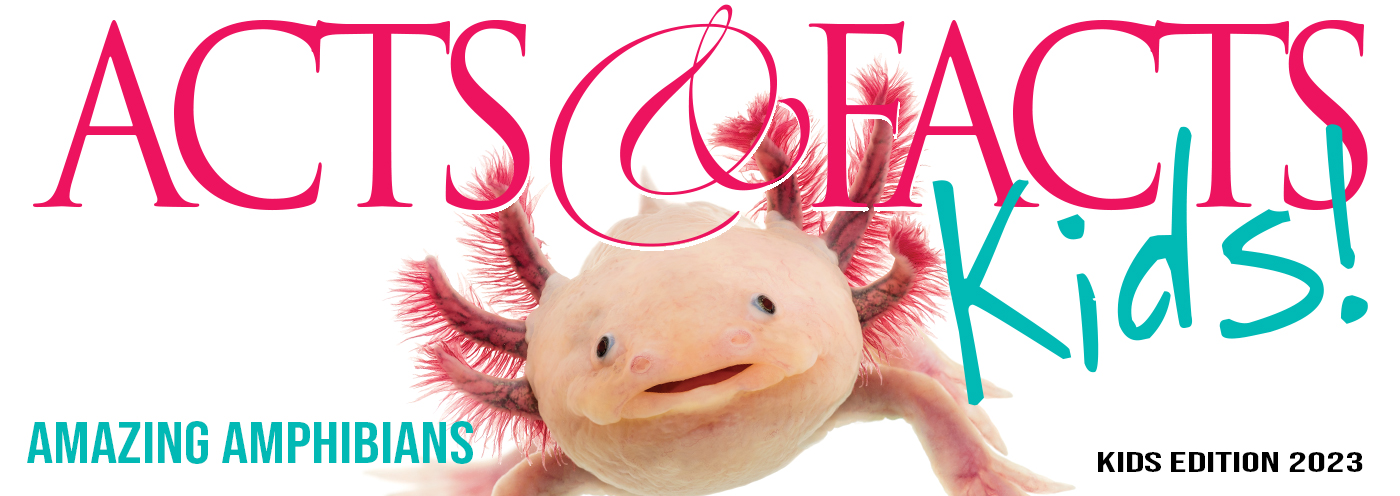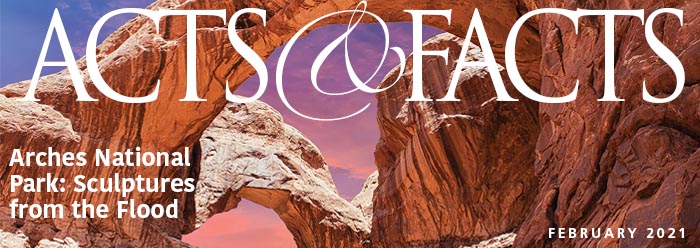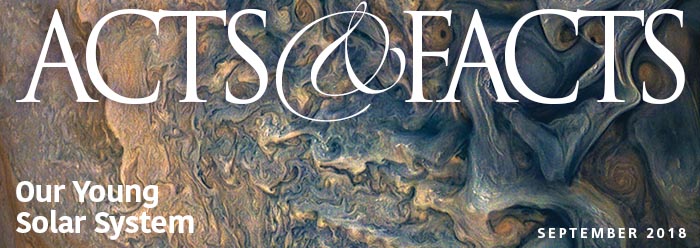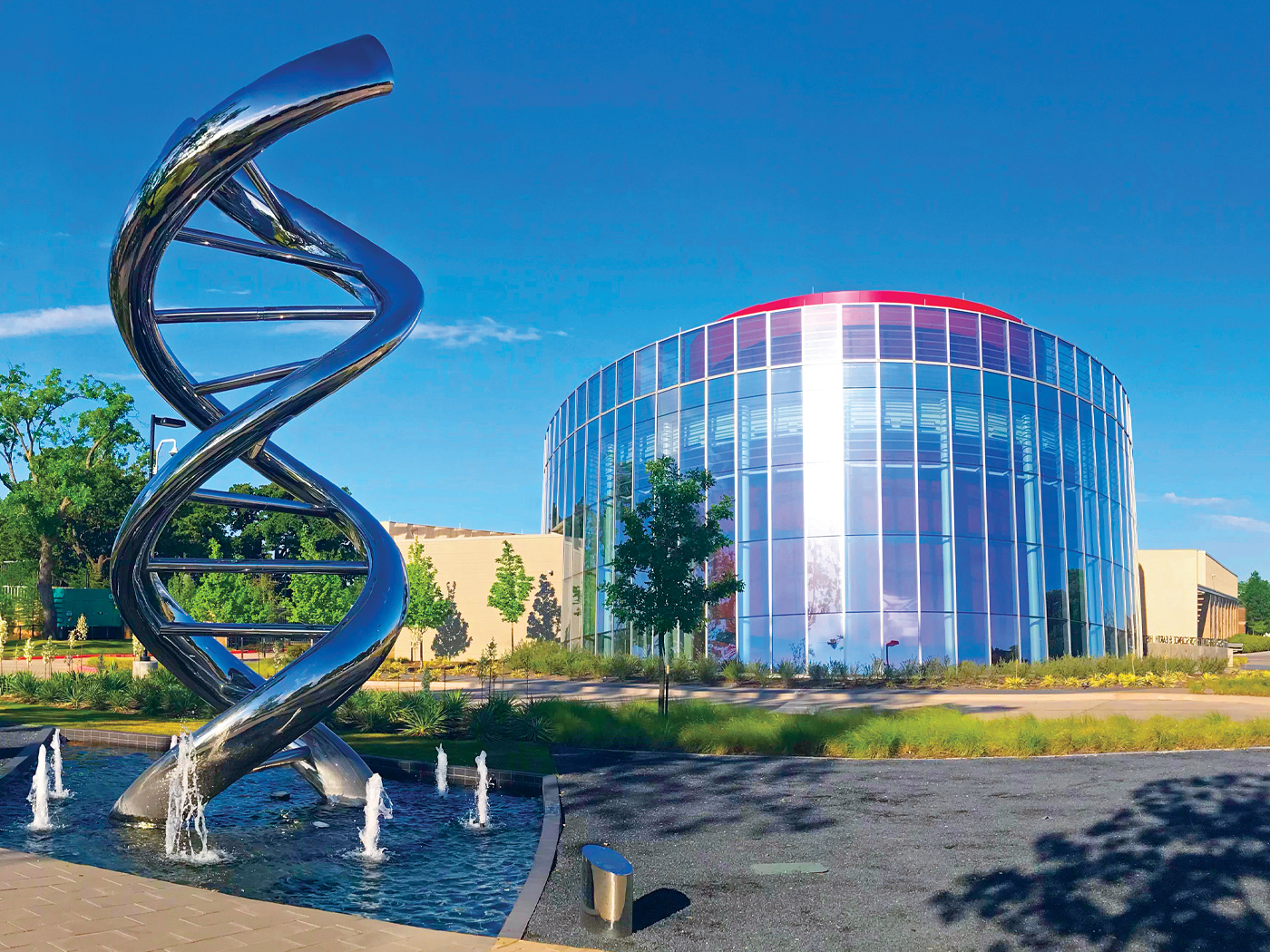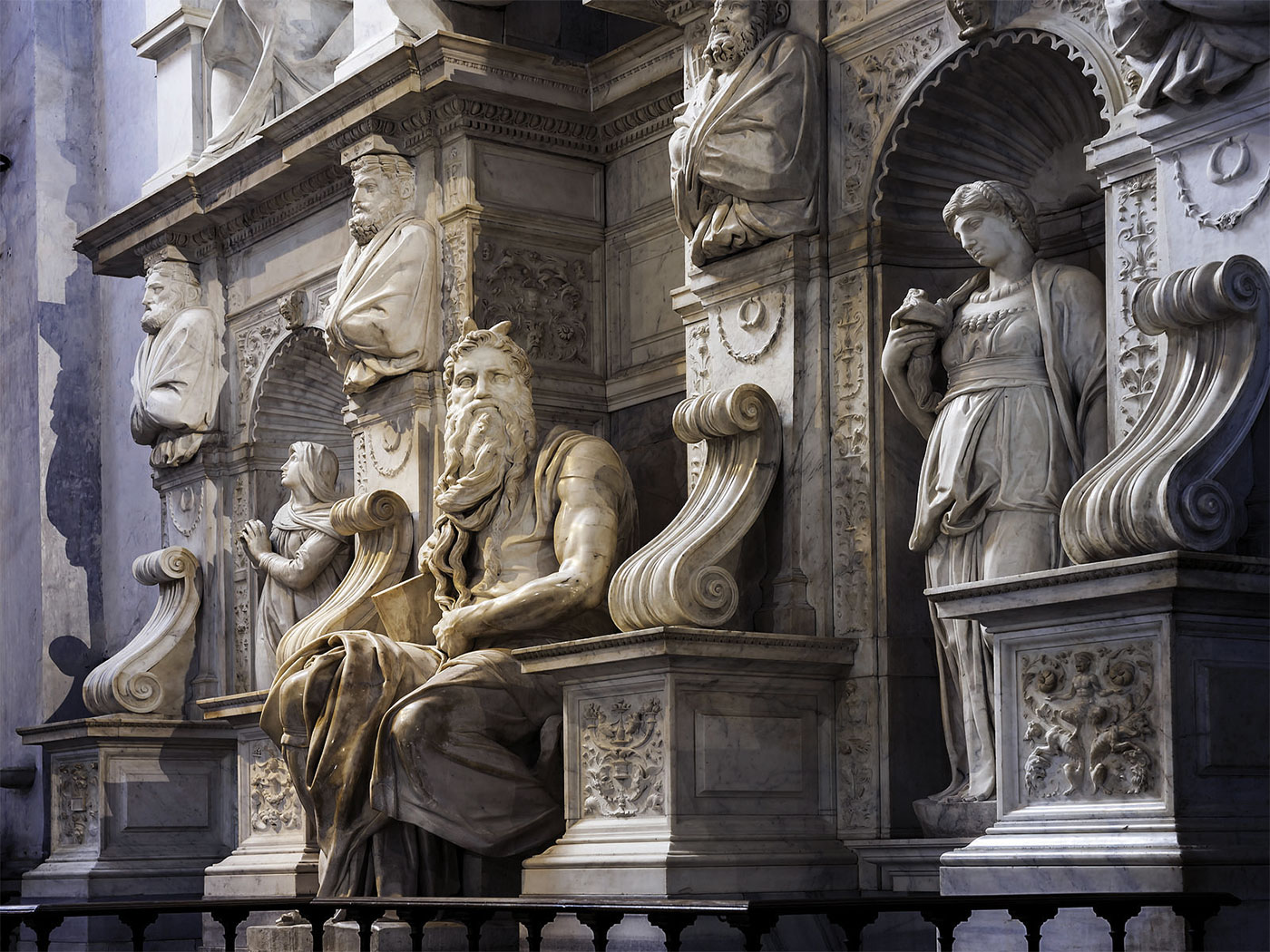Hamlet: Do you see yonder cloud that's almost in shape of a camel?
Polonius: By the mass, and 'tis like a camel, indeed.
Hamlet: Me thinks it is like a weasel.
Polonius: It is backed like a weasel.
Hamlet: Or like a whale?
Polonius: Very like a whale.
Introduction
The American public—including young people in our tax-supported public schools—is constantly indoctrinated with the curious idea that people (and whales) have come from bacteria.
One legitimate answer to the question "What is life?" is "bacteria." Any organism, if not itself a live bacterium, is then a descendant—one way or another—of a bacterium or, more likely, mergers of several kinds of bacteria.1
Naturalists shroud such whimsical statements with the mantle of science. Indeed, one encounters many bizarre explanations for the origin of the species when such strange fiction grips biology. A popular contemporary "just so" story tells how land mammals ventured back into the ancient seas and became whales. The idea was first presented by Darwin in the first edition of his book, Origin of Species. The naturalist stated: "I can see no difficulty in a race of bears being rendered, by natural selection, more and more aquatic in their habits, with larger and larger mouths, till a creature was produced as monstrous as a whale." Interestingly, Darwin retracted this example in all later editions of his book.
This has not stopped later evolutionists. For example, the ancient ancestors of whales, writes the late Sir Gavin de Beer, ". . . had dentitions enabling them to feed on large animals, but some took to preying on fish and rapidly evolved teeth like sharks. . . . Next, some whales preyed on small cuttlefish and evolved a reduced dentition. Finally the whalebone whales, having taken to feeding on enormous numbers of small shrimps, also evolved rapidly.2
This imaginary tale explains nothing. No one was there to observe, measure, or take notes regarding the above process. Thus, it is idle speculation and should not be considered science.
When we investigate whale evolution from a non-whale ancestor, the problems seem as enormous as the creatures themselves. In 1982, a British science writer and evolutionist said:
The problem for Darwinians is in trying to find an explanation for the immense number of adaptations and mutations needed to change a small and primitive earthbound mammal, living alongside and dominated by dinosaurs, into a huge animal with a body uniquely shaped so as to be able to swim deep in the oceans, a vast environment previously unknown to mammals . . . all this had to evolve in at most five to ten million years—about the same time as the relatively trivial evolution of the first upright walking apes into ourselves.3
Evolutionist Michael Denton described the problem of such a fantastic transition by saying: ". . . we must suppose the existence of innumerable collateral branches leading to many unknown types . . . one is inclined to think in terms of possibly hundreds, even thousands of transitional species on the most direct path between a hypothetical land ancestor and the common ancestor of modern whales . . . we are forced to admit with Darwin that in terms of gradual evolution, considering all the collateral branches that must have existed in the crossing of such gaps, the number of transitional species must have been inconceivably great.4
It is no wonder that ". . . the evolutionary origin of whales remains controversial among zoologists."5
The Physiology Problem
A number of land animals have been proposed as the whale's ancestor, including Darwin's bear, grazing ungulates, wolf-like carnivores (Mesonyx), and the hippopotamus. In each case the morphological differences are significant. If whales (cetaceans) did evolve from land mammals, they did so at an unbelievable rate, accruing an amazing number of "beneficial" mutations and adaptations.
The skeletal features would need to change radically, as well as the physiology (the collective functions of an organism). For example, the supposed early "whale," Ambulocetus, drank fresh water probably throughout its life "50 million years ago," and Indocetus was a saltwater drinker "48 million years ago." This means that in perhaps three million years there had to be an extreme change in the physiology of these creatures.6
These "proto-whales" would have had to mutate in a beneficial manner to produce the above physiological adaptations. However, science shows that organisms don't survive a rapid rate of mutation. Additionally, a popular encyclopedia recently stated: "Presumably, various physiological mechanisms for handling oxygen debt and lactic acid buildup, as well as the development of blubber for fat storage and for temperature regulation, evolved early, though evidence of the evolutionary history is unavailable."7
Less obvious essential design features would ensure the cetaceans against hypothermia. Mammals are warmblooded creatures designed by the Creator to function at a constant body temperature higher than fish, reptiles, or amphibians.
Maintaining a core body temperature while being bathed in an ocean of cold water would be a definite problem for the cetaceans. However, whale fins have fascinating biological structures called countercurrent heat exchangers to conserve heat. Also, zoologists have recently discovered exchangers located at the base of the massive tongue of grey whales.8 These exchangers are a series of blood vessels arranged so that they too function as heat exchangers to minimize heat loss. The grey whale would otherwise lose much body heat through the tongue's extensive vascularization.
Macroevolutionists cannot appeal to natural selection to produce amazing structures like the countercurrent system, although comparative physiologists present countercurrent exchange found in gills and kidneys as structures that repeatedly evolved. Indeed, no known process can turn a four-legged land creature into a blue whale: "Natural selection can act only on those biologic properties that already exist; it cannot create properties in order to meet adaptational needs."9 Specifically, natural selection cannot produce new structures as is often stated in evolutionary just-so stories; it can only preserve the best-adapted varieties which occur by other means.
Problems from Head to Tail
Gould10 proclaims the long and slim Basilosaurus as ". . . the 'standard' and best-known early whale." However, evolutionist Barbara J. Stahl states: "The serpentine form of the body and the peculiar serrated cheek teeth make it plain that these archaeocetes [i.e., Basilosaurus and related creatures] could not possibly have been ancestral to any of the modern whales."11 Today there are two major groups of cetaceans: the baleen whales, called the mysticeti with double blowholes; and the toothed whales, odontoceti with a single blowhole. Stahl presents irritating morphological facts such as: ". . . the structure of the skull in the odontocete and mysticete forms shows a strange modification not present, even in a rudimentary way, in Basilosaurus and its smaller relatives. . . ." She also describes sperm whales (odontocete) which have an asymmetric arrangement of bones that roof the skull, while mysticeans have a symmetrical arrangement.
None of the suggested whale's terrestrial ancestors (ungulates or carnivores) have a vertical tail movement. However, whales (and an alleged link, Ambulocetus) do have a spinal up-and-down undulation. When did this happen? Where are all the fossils documenting how the side-to-side movement of the land mammal's tail changed to the down and up movement of Ambulocetus (and the whales)? This is quite significant! The land ancestor of the whale would have to gradually eliminate its pelvis, replacing it with a very different skeletal structure and associated musculature that would support a massive, flat tail (with flukes). Pure undirected chance would have to simultaneously produce these horizontal tail flukes independently, diminish the pelvis, and allow the deformed land creature to continue to live and even flourish in the sea.
The Problem of Molecular Biology
At the 1997 keynote lecture of Darwin Day at the University of Tennessee, Douglas Futuyma stated that ". . . the molecular revolution in biology has furnished us with mountains of information that not only attests to the history of evolution, but also sheds even more light on evolutionary processes." A far different evaluation was given the same year by three evolutionary biologists who stated: ". . . even with the appropriate genes, the molecular tree of life is difficult to interpret."12 Few systematists (biologists who study taxonomy and are involved in reconstructing phylogenetic, or evolutionary, history) would say that morphological patterns of form line up with the molecular evidence.
Regarding the supposed relationship between terrestrial and aquatic mammals, one publication reported: "These results reveal a large discordance between morphological and molecular measures of similarity. Rats and mice are classified in the same family, while cows and whales are classified in different orders. Perhaps molecular sequences are not necessarily giving us an accurate picture of ancestry."13
Zoologist John Gatesy reports competing interpretations of whale origins using phylogenetic analyses of a blood-clotting protein gene from cetaceans, artiodactyls (pigs, hippopotamuses, ruminants, and camels), perissodactyls (rhinos and horses), and carnivores. He says that in combination with published DNA sequences, the data of this clotting protein " . . . unambiguously support a hippo/whale clade and are inconsistent with the paleontological perspective."14
Ever since Darwin we have seen that neither natural selection nor random mutations could possibly serve as remotely sufficient mechanisms of change that would turn terrestrial tetrapods into whales. Molecular biology, physiology, and morphology present impenetrable roadblocks for tracing a common ancestry from tetrapods to archaeocetes to modern whales.
References
- Margulis and Sagan, What is Life? (New York: Simon & Schuster 1995), p. 53.
- Atlas of Evolution (1964).
- F. Hitching, The Neck of the Giraffe (Ticknor & Fields, New Haven & New York, 1982), p. 90.
- M. Denton, Evolution: A Theory in Crisis (Adler & Adler, 1985), p. 174.
- Compton's Interactive Encyclopedia (1996).
- J. Thewissen, et al., "Evolution of Cetacean Osmoregulation," Nature, 381:379-380 (1996).
- Compton's Interactive Encyclopedia (1996).
- J. Heyning and J. Mead, "Thermoregulation in the Mouths of Feeding Gray Whales," Science, 278:1138-39 (1997).
- Noble, et al., Parasitology, 6th ed. (Lea & Febiger, 1989), p. 516.
- S. J. Gould, "Hooking Leviathan by Its Past," Natural History (May 1994), pp.8-15.
- B. J. Stahl, Vertebrate History: Problems in Evolution (Dover Publications, Inc., 1985), p. 489.
- Erwin, Valentine and Jablonski, American Scientist, 85:127 (1997).
- "The Marsupial Mitochondrial Genome and the Evolution of Placental Mammals," Genetics, 137:243-256 (1994).
- J. Gatesy, "More DNA Support for a Cetacea/Hippopotamidae Clade . . ." Molecular Biological Evolution 14(5):537-543 (1997).
* Biologist Frank Sherwin is a creation lecturer at ICR.




